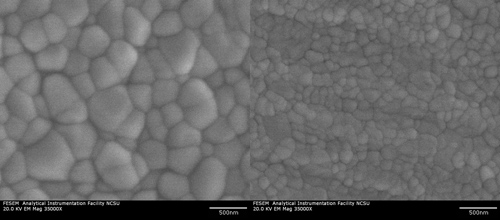Researchers from the University of North Carolina found that the application of a weak electric field causes a faster preparation of ceramic materials during production at low temperatures, and increases the strength of the ceramic material itself

Researchers from the University of North Carolina found that applying a weak electric field causes a faster preparation of ceramic materials during production at low temperatures, and increases the strength of the ceramic material itself.
At the heart of the research is a process called sintering (a process of heating a material at a temperature that is slightly below the melting point in order to form one solid block) by means of which most ceramic materials are produced today. The process includes compressing the powder of the ceramic material into the desired shape of the finished product and heating it. At high heat, the atoms of the powdery material bind together by fluttering - atoms of different powder grains move and "glue" the powder particles together. The gluing process increases the porosity of the ceramic material, which significantly strengthens the final material.
"By applying an alternating current electric field at 60 Hz, we were able to eliminate the pores at a temperature of 1250 degrees Celsius - compared to a temperature of 1500 degrees Celsius required without the electric field," said Dr. Hans Conrad, professor of materials science and engineering at the University of North Carolina and one of From the authors of the article. In addition, the researchers were able to reduce the size of the grains of the ceramic material by sixty-three percent - to obtain grains with a diameter of 134 nanometers, compared to a diameter of 360 nanometers obtained through normal bonding methods. A smaller grain size makes the ceramic material stronger, because the larger the grain, the easier it is for cracks to form and propagate.
Ceramic materials are important components in a variety of products, including insulators, spark plugs, fuel cells, fuel cells, gas turbines, nuclear rods, and bearings, construction materials and protective partitions that are all resistant to high temperatures.
The researchers were able to achieve similar, albeit less good, results by applying an electric field originating from a direct current. The porosity disappeared at a temperature of 1400 degrees Celsius using direct current, and the size of the grains is reduced to a diameter of 217 nanometers - two values that are still a significant improvement compared to existing bonding methods. The applied field, both following a direct current, and following an alternating current, was about 13.9 volts/cm.
"We found that using a weak electric field - with a current of only about one-sixth-eighth of an ampere per centimeter - can lead to an improvement in the rate of the sticking process and to obtain a much smaller grain size," said the researcher. In other words, manufacturers of ceramic materials will be able to produce their products faster and cheaper by using an inexpensive electric field - and make their materials more rigid.
"In our new process you do not use a lot of energy - because it is directed directly to the atomic site where it is needed - instead of using more energy to achieve high temperatures in the furnace, which is less efficient," explains the researcher. "If you are interested in harder ceramic materials, you need to eliminate the pores and keep the grain size as small as possible. And you want to achieve this at the lowest possible cost - that is, using as little energy as possible, at a low temperature and at the fastest possible rate. The use of an electric field enables the achievement of all these goals."
The research findings were published in the scientific journal Scripta Materialia.

4 תגובות
The kind of very strange research that for some reason this time did give a good solution.
I wonder what will happen if we put an electric field in the material... 🙂
It reminds me of the experiments in the field of biology that were most of the experiments in the last century, taking a substance, and putting it on an animal in the hope that it will do something good without a fundamental understanding of the problem.
In any case, for the soldier in Afghanistan whose life was saved thanks to the bullet that failed to penetrate the ceramic vest, this is nevertheless a huge advance. and
Max,
In any case, it's not about the length, we agree on that. This made me go to the original article, which says cm squared.
We do not know exactly how the experiment was carried out, it is possible that it is a matter of preparing a thin layer of the ceramic material (a reasonable assumption) and therefore the use of units of amperes divided by area.
Adi is about volume, it should be cc to be more precise.
A small and irritating note, regarding units:
"With a current of only about one-sixth-eighth of an ampere per centimeter" should be
"With a current of only about one-sixth-eighth of an ampere per square centimeter"